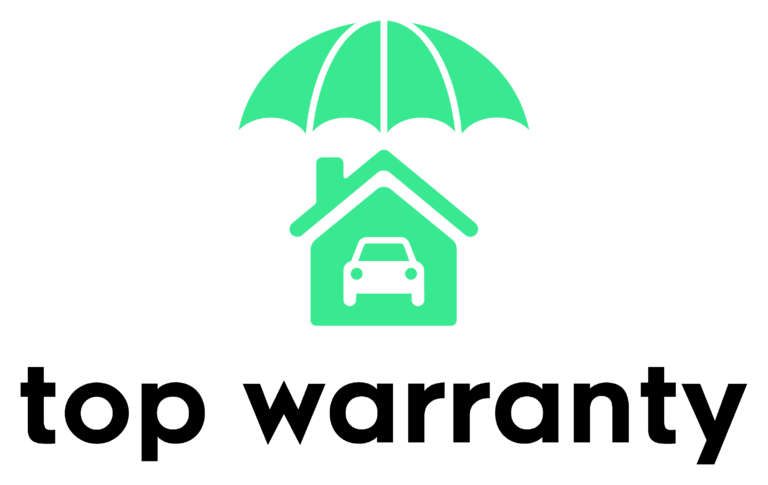
Third Party vs Comprehensive: Know the Key Differences in Car Insurance Coverage
March 18, 2024
Car insurance provides financial protection against losses or damages to a vehicle along with liability coverage in case of an accident. Broadly, car insurance policies can be classified into third party insurance and comprehensive insurance. Both have some similarities and differences in terms of coverage, cost, claims process, etc.
This article will provide an overview of third party vs comprehensive car insurance in terms of their key features, coverage, premium costs, geographic availability, and claims settlement process. It will help readers understand and differentiate between these two major types of motor insurance policies so they can make an informed decision while purchasing car insurance.
Definition of Third Party Insurance
Third party insurance is the most basic form of car insurance and is mandatory by law in India. It covers legal liability to third parties in case of an accident.
Third party insurance only provides protection against damage or injury caused to a third party. It does not cover any loss or damage to your own vehicle. The policy only covers bodily injury and death of third parties and damage to third party property.
Some key points about third party insurance:
- Covers injury or death of third parties caused by an accident involving your vehicle
- Covers damage caused to third party property
- Does not cover damage to your own vehicle under any circumstances
- Provides unlimited liability protection against third party claims
- Generally the cheapest form of car insurance
So in summary, third party insurance is mandatory coverage that only provides protection against third party losses. It does not cover your own damage or loss to your vehicle.
Also, Read : Explore Cashless Car Insurance
Definition of Comprehensive Insurance
Comprehensive insurance is a type of car insurance policy that provides extensive coverage for damage to your own vehicle from events like fire, theft, vandalism, natural disasters, falling objects, collisions with animals, and more.
Unlike third party insurance which only covers damage you cause to others, comprehensive insurance protects against losses and damage to your own car. It essentially covers everything that third party and collision insurance does not.
Comprehensive coverage is an optional add-on policy that you can purchase along with your standard motor insurance. It provides financial protection for your own vehicle in situations where the damage is not caused by a collision or your own driving fault.
The key aspect of comprehensive insurance is that it covers damage to your own car. So if your vehicle gets stolen, catches fire, is hit by a flood or cyclone, is damaged by animals, or suffers vandalism or riots – comprehensive insurance will pay for the repairs or replacement up to the insured amount. This gives vehicle owners peace of mind.
In addition to first party damage protection, most comprehensive policies also include basic third party liability coverage in case you injure someone else or damage their property. So comprehensive insurance provides extensive coverage both for your own vehicle as well as any damage you may cause others. This makes it a complete insurance package.
Third Party Coverage
Third party insurance provides coverage for any legal liability that arises due to accidental bodily injury to a third party or damage to their property. This means if you are found legally liable for injuring someone else or damaging their property while driving the insured vehicle, your third party policy will pay for the compensation awarded by the court up to the sum insured.
Some key aspects of third party injury coverage:
- Covers bodily injury or death suffered by third parties like pedestrians, passengers in your car, or occupants of another vehicle.
- Provides compensation for medical expenses, loss of income, disability, and even funeral expenses incurred by the victim or their family.
- Legal costs and expenses incurred while defending claims are also covered.
- Does not provide cover if the insured driver was driving under the influence of alcohol or drugs.
So in a nutshell, third party cover protects you from financial loss arising from compensation that has to be paid to third parties for injuries or fatalities you may have caused while driving the insured vehicle. It provides you with legal and financial protection in such situations.
Also, Read : Does Gap Insurance Cover the Depreciation on Your New Car?
Comprehensive Coverage
Comprehensive car insurance provides extensive coverage for the policyholder’s own vehicle as well as third party liability. Here are some of the key aspects covered under a comprehensive policy:
Own Damage
- Covers damage to the insured vehicle due to natural calamities like flood, earthquake, fire, explosion, self-ignition etc.
- Also covers damage from man-made causes like burglary, theft, riot, strike, terrorist activity etc.
- Provides coverage for accidents, collisions and overturning of the vehicle.
- Offers protection from losses arising out of minor mishaps like falling objects, lightning, explosion, etc.
Third Party Injury
- Covers legal liability arising due to accidental death or injury to third parties.
- Provides coverage of legal costs and expenses incurred, with insurer’s consent.
- Offers compensation for loss or damage to third party property.
Additional Covers
- Personal accident cover for owner-driver.
- Cover for vehicle accessories not forming part of standard equipment.
- Emergency assistance including towing charges up to specified limit.
- Courtesy or replacement car while repair work is being carried out.
- Depreciation cover and engine protector cover offered optionally.
Additional Covers
Beyond basic third party and comprehensive coverage, most insurance companies offer some additional options and covers that can be added onto a policy. Some key additional covers to consider include:
Personal Accident Cover – This provides compensation to the policyholder in case of accidental death or permanent disability. The payout amount is pre-decided. This helps provide financial support to you or your family in the case of an unfortunate accident. Personal accident cover is usually offered as an add-on.
Emergency Assistance Cover – Many insurers offer 24/7 roadside assistance and emergency help through tie-ups with other service providers. This usually includes services like:
- Towing your vehicle to the nearest garage in case of a breakdown
- Arranging for fuel delivery if you run out of gas on the highway
- Organizing locksmith service if you lock your keys in the car
- Medical co-ordination if there is an accident
Having emergency assistance gives you access to quick help and takes care of coordination and payments during an emergency situation. This provides great peace of mind to drivers.
Premium Cost
Comprehensive car insurance is more expensive than third party car insurance. This is because comprehensive coverage provides protection for your own vehicle, whereas third party only covers damage you cause to others.
Some key differences in premium costs:
- Comprehensive policies can cost 2-3 times more than third party policies. For example, a third party policy may cost $500 per year, while a comprehensive policy for the same driver and car could cost $1200-$1500.
- Premiums for comprehensive insurance are higher because there is more risk for the insurer – they are covering damage to your own car in accidents along with liability. With a third party only the insurer only covers their liability for damage to others.
- Factors like make/model of car, location, age of driver etc can cause premium variation. Typically premiums will be higher for cars more prone to damage or theft. Comprehensive premiums also tend to rise substantially as vehicles age.
- Discounts like no claim bonus tend to have more impact on comprehensive premiums. After a few years claim-free driving the premium difference between comprehensive and third party reduces. But comprehensive still remains more expensive for the same driver/car.
So in summary, comprehensive coverage provides greater protection but at a higher recurring premium cost. Third party only policies are more budget-friendly but leave you exposed for any damage to your own vehicle.
Also, Read : What to Do After a Car Accident: A Step-by-Step Guide
Claim Process
When it comes to making a claim, there are some key differences between third party insurance and comprehensive insurance.
Third Party Insurance Claims
- For third party insurance, claims are made when the policyholder’s vehicle damages someone else’s property or vehicle, or injuries another person. The claim process involves contacting the insurer, providing details of the incident along with supporting documentation, and cooperating with any investigations.
- The insurer will determine if the policyholder was at fault and if their third party liability covers the damages. If approved, the insurer will pay the compensation directly to the affected third party on the policyholder’s behalf. This protects the policyholder from legal proceedings and expenses.
- It’s important to notify the insurer immediately of any third party claims made against the policyholder. Delayed notifications could mean reduced or rejected payouts. Complete cooperation with the insurer is also required through the claim process.
Comprehensive Insurance Claims
- With comprehensive policies, claims arise when the policyholder’s own vehicle suffers damage, theft or other losses. After contacting the insurer with details, the policyholder will need to submit proof like repair estimates, police reports, etc.
- If approved, the insurer will reimburse the policyholder directly for covered costs like repairs or replacement value in case of total loss. Some insurers may also directly handle repairs through preferred workshops.
- Claims must be intimated promptly, with supporting documentation provided. The claims process may also require the vehicle to be inspected by the insurer before approval.
Geographic Restrictions
There can be some key differences in third party insurance and comprehensive insurance coverage depending on geographic location.
For third party insurance, the minimum legal requirements for coverage can vary significantly between states and territories. For example, in some regions third party insurance may only cover personal injury, while in others it is mandated to also include property damage liability. Always check the specific requirements for where the vehicle will be driven.
With comprehensive car insurance, most policies will specify the eligible coverage area – usually restricted to a single country. There may be options to extend coverage to additional countries for an added premium. But generally comprehensive policies are designed for local conditions.
So for both third party and comprehensive car insurance, be clear on the geographic regions where full coverage will apply. There is often reduced or no coverage outside those specified areas. Knowing the limitations is important to avoid surprises in the event of a claim. Discuss your regular driving region with your insurer to ensure you have adequate protection.
Conclusion
In summary, the key differences between third party insurance and comprehensive insurance are:
- Third party insurance only covers damage you cause to others, while comprehensive insurance also covers damage to your own vehicle.
- Comprehensive insurance has wider coverage, including theft, fire, natural disasters, etc. Third party only covers third party liability.
- Comprehensive policies usually cost more in premiums, as they provide more extensive coverage. Third party is a basic, affordable policy.
- Comprehensive insurance is recommended for new and expensive vehicles as it protects your asset. Third party may be suitable for old cars.
- Claim processes can be easier with comprehensive insurance as you are claiming for your own vehicle. For third party, the other party must claim against you.
- Comprehensive insurance is valid across India with the same coverage. Third party minimum requirements vary between states.
- Comprehensive policies provide additional covers like zero depreciation and engine protection. Third party only meets basic legal requirements.
So in summary, comprehensive insurance provides maximum protection for your own vehicle, while third party cover legal liabilities only. The right policy depends on your vehicle value and personal requirements.
